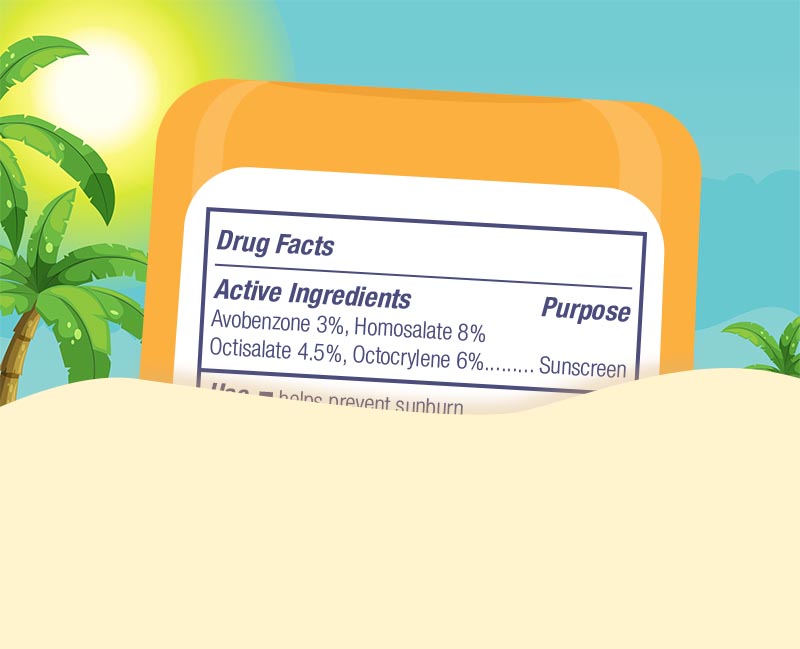Screen Test: How to decode a sunscreen label
Sunscreen helps prevent skin cancer (and wrinkles!). But many of its active ingredients are absorbed through the skin. Are they safe? The Food and Drug Administration wants more research. And Consumer Reports says that most sunscreens with two safe unabsorbed active ingredients—titanium dioxide and zinc oxide—overstate their SPF. Here's the scoop on sunscreen labels.
Broad spectrum
Look for broad spectrum to block both UVB and some UVA rays (though there's no SPF rating for UVA, so you don't know how much is being blocked). The FDA wants all SPF 15-or-higher sunscreens to block some UVA rays and wants higher SPFs to block more.
PABA free
lgnore PABA claims. The compound can cause allergic reactions, but it's rarely used in sunscreens anymore.
Unsafe Active Ingredients?

The FDA wants more safety data for 12 active ingredients, because they may be absorbed.1 Zinc oxide and titanium dioxide are not absorbed.2 But sunscreens that use them may overstate their SPFs, say Consumer Reports' tests. Solution: try Goddess Garden Everyday Natural Lotion SPF 30 or California Kids Supersensitive Lotion SPF 30+. Both fared better than others that CR tested.
Expiration date
Sunscreens degrade over time. See no expiration date? That means the company has proven that the sunscreen is stable for at least three years.
SPF
The sun protection factor tells you how well a sunscreen blocks UVB rays. The FDA has proposed that labels not exceed SPF 60+ because higher SPFs don't offer much more protection. Even SPF 30 blocks 97 percent of UVB rays.
Reef safe
Reef safe usually means no oxybenzone or octinoxate, which can harm coral reefs. But the claim is unregulated, and no sunscreen has been proven safe for all marine life.
Water resistant
Swimming or sweating? Look for water resistant sunscreen, which retains its SPF value for either 40 or 80 minutes.
Oxybenzone free
Oxybenzone is readily absorbed and has been detected in human blood, urine, and breast milk. It's a hormone disruptor in animal studies.3
1 regulations.gov/document?D=FDA-1978-N-0018-0841.
2JAMA 321: 2082. 2019.
3Int. J. Androl. 35: 424. 2012.
Illustrations: Jorge Bach/CSPI (sunscreen and beach), freedesignfile.com (palm trees).
Continue reading this article with a NutritionAction subscription
Already a subscriber? Log in

